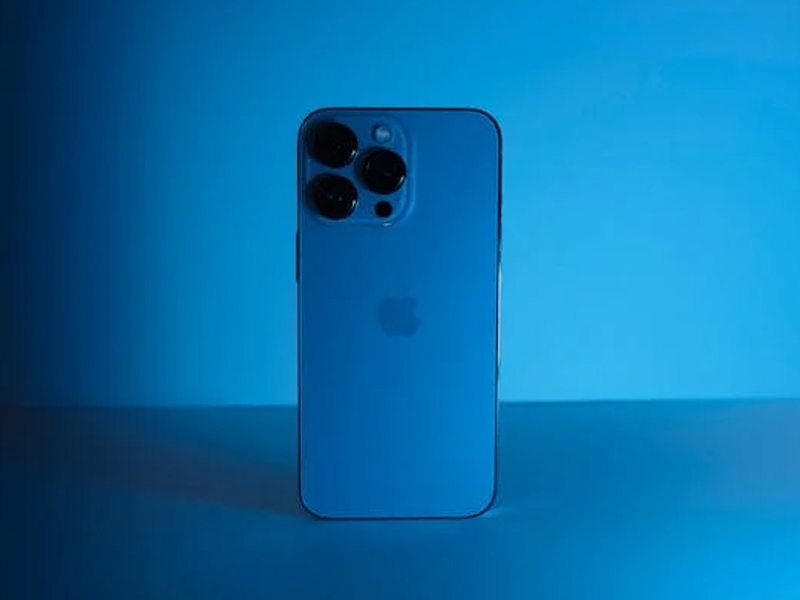iPhone Repair Just Got Easier: No More Disabling Find My Before Service

Mobile Technology
What’s the Problem with Disabling Find My Before Repair?
Disabling Find My before a repair has several drawbacks:Inconvenience
Users had to wait to re-enable the feature after repairs, potentially leaving their iPhone vulnerable during the interim.Security Concerns
While disabling Find My protects your data during repairs, it also meant losing the ability to locate a lost or stolen phone until re-enabled.Limited Options
This forced users to rely solely on Apple authorized service centers, potentially limiting their repair options and potentially driving up costs.Introducing “Repair State”: A Secure and Convenient Solution
 The new “Repair State” feature in iOS 17.5 beta offers a more user-friendly approach. Here’s how it works:
The new “Repair State” feature in iOS 17.5 beta offers a more user-friendly approach. Here’s how it works:
Before Repair
Users will be presented with a new option to enter “Repair State” when preparing their iPhone for service.Verification
This mode likely requires users to confirm their Apple ID and password, verifying their ownership and ensuring unauthorized access remains blocked.Functionality Maintained
Crucially, with the iPhone in “Repair State,” features like Find My and Activation Lock will remain active, even during repairs. This eliminates the need to disable them altogether.Benefits of Repair State for Users
This new feature offers numerous advantages for iPhone users:Peace of Mind
With Find My remaining active, users can have peace of mind knowing their iPhone remains traceable even during repairs.Convenience
No more waiting to re-enable Find My – simply pick up your repaired iPhone and you’re good to go.More Repair Options
Users are no longer limited to Apple authorized service centers. Third-party repair shops equipped to handle devices in “Repair State” become a viable option, potentially offering more convenient locations or competitive pricing.What About Security?
With Find My remaining active during repairs, security concerns might arise. Here’s what we know so far:Limited Functionality for Repair Technicians
Repair technicians likely won’t have full access to user data or functionality, ensuring sensitive information remains protected.Apple’s Responsibility
The onus remains on Apple to ensure the security of user data during repairs, regardless of the service provider.Transparency is Key
Apple needs to clearly communicate the limitations and security protocols associated with “Repair State” to build trust with users.The Future of iPhone Repairs: A Collaborative Approach?
This new feature signifies a potential shift in Apple’s approach to iPhone repairs. Here are some possibilities:Certification for Third-Party Repair Shops
Apple may develop a certification program for third-party shops, ensuring they meet specific security standards for handling devices in “Repair State.”Standardized Repair Tools
Standardization of diagnostic and repair tools could streamline the process for both authorized and third-party repair providers.Focus on User Choice and Convenience
Ultimately, “Repair State” empowers users to choose their preferred repair provider while maintaining essential functionalities like Find My.What Does This Mean for You?
The “Repair State” feature is currently in beta testing, with a potential rollout expected later in 2024 with iOS 17.5. Here’s how to prepare:Stay Updated
Keep your iPhone updated with the latest iOS version to benefit from new features like “Repair State” when it becomes available.Research Repair Options
Familiarize yourself with both Apple authorized service centers and reputable third-party repair shops in your area.Ask Questions
When seeking repairs, inquire about their experience with devices in “”Repair State” and their security protocols to ensure your data remains protected.A Brighter Future for iPhone Repairs
The introduction of “Repair State” is a positive step towards a more user-centric approach to iPhone repairs. Here’s a glimpse into what the future might hold:Increased Competition
With more repair options available, competition could lead to lower repair costs and a wider range of service providers for iPhone users.Focus on Innovation
A more open repair ecosystem could incentivize innovation in diagnostic tools and repair techniques, ultimately benefiting consumers.Right to Repair
This feature aligns with the “Right to Repair” movement, advocating for user access to repair information and spare parts, potentially extending the lifespan of iPhones.A Note on User Responsibility
While “Repair State” offers more repair freedom, it’s crucial to choose reputable service providers. Look for shops with positive customer reviews, trained technicians, and transparent pricing.A Step in the Right Direction
The “Repair State” feature in iOS 17.5 beta signifies a welcome change for iPhone users. This new approach offers convenience, peace of mind, and potentially more repair options. While security remains a concern, increased transparency and collaboration between Apple and third-party repair providers can pave the way for a more secure and user-friendly repair ecosystem for iPhones in the future. As with any new technology, it’s important to stay informed, choose reputable repair services, and leverage this feature to keep your iPhone functioning smoothly for years to come.Frequently Asked Questions?

01
Blockchain
The Industrial Metaverse: Revolutionizing Manufacturing and Beyond
May 17, 2024

01
Cybersecurity
Don’t Get Hacked: Update Your LiteSpeed Cache Plugin Immediately
May 16, 2024

01
AI & ML
Google Search Goes Visual: Search by Uploading a Video!
May 15, 2024

01
Tech news
iOS 18: A Sneak Peek at Apple’s Next Big Update
May 13, 2024
SUSBSCRIBE TO OUR NEWSLETTER
Join our subscribers list to get the latest news and special offers.
The Industrial Metaverse: Revolutionizing Manufacturing and Beyond
Don’t Get Hacked: Update Your LiteSpeed Cache Plugin Immediately
Google Search Goes Visual: Search by Uploading a Video!
President to Announce $3.3 Billion Investment for AI Data Center by Microsoft